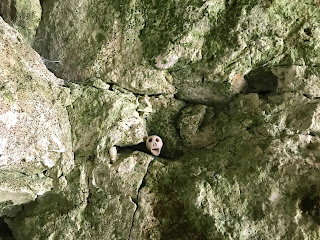The town of Ramsgate is dominated by the
rather impressive Royal Harbour and the lines and lines of boats moored up
there.
After lunch of cod & chips and a cup
of tea at a local chippy, I wandered off to have a look around the harbour. In the afternoon sunshine it was busy with
sightseers, fishermen and people pottering about on boats. There were also flocks of noisy, squawking seagulls
zooming around in their self-assured and cocky way.
The Royal Harbour was given its title by
King George IV in 1821, after he had visited the town several times. Seemingly
he had so much fun in the place that he felt he had to bestow some honour on it,
so he decreed that the harbour should be given the title of royal and that it
could fly his royal standard three times a year. It sounds a bit like one of those look at me
presents where the giver doesn’t really give that much and it’s really all
about them. Still, saying that it,
Ramsgate Harbour is the only Royal Harbour in the UK.
In 1940, during World War II, Ramsgate
was one of the places where many small boats gathered to take part in Operation
Dynamo. They sailed over to Dunkirk
where they helped to ferry men on to waiting ships so that they could be
evacuated back to Britain. Over forty
thousand of the men rescued during this operation were landed at Ramsgate.
After walking to the end of the East
Pier at the harbour, I made my way round to the more picturesque West Pier and
the lighthouse there.
The lighthouse was designed by the
architect John Shaw and built in 1842.
It is not the original lighthouse, as the first one was built close to
the end of the pier and was frequently damaged by ship’s yardarms as they
entered the harbour.
I left the Skulferatu that had
accompanied me on my walk in a metal structure at the side of the harbour, near
to the lighthouse.
The coordinates for the location of the Skulferatu
are –
Latitude 51.327809
Longitude 1.421615
I used the following sources for
information on the Lighthouse –
Tourist Information at
site
Port of Ramsgate
Ramsgate, Kent's Coastal
Heritage Town
Ramsgate Town - The
Royal Harbour






































